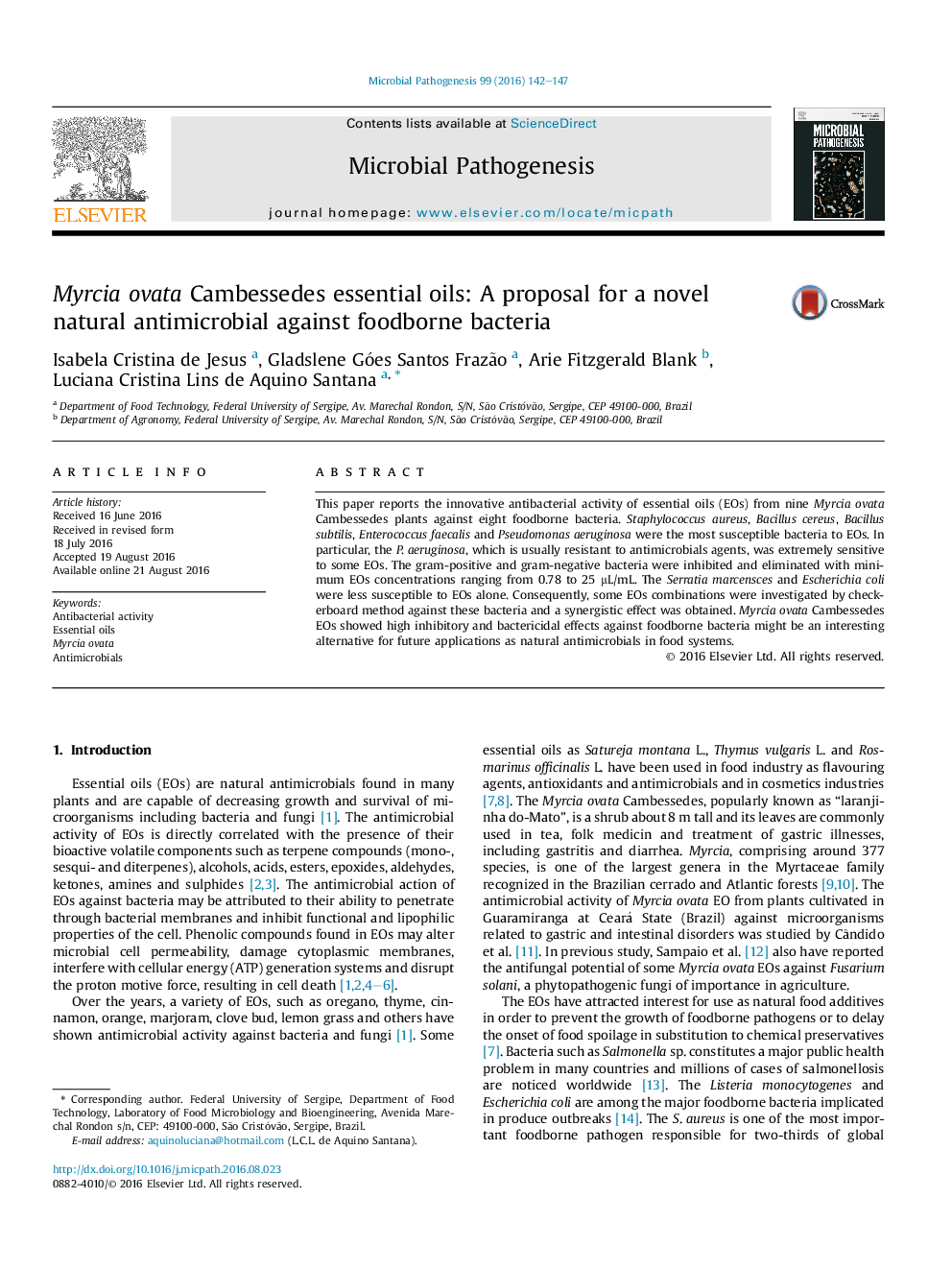| Article ID | Journal | Published Year | Pages | File Type |
|---|---|---|---|---|
| 3416282 | Microbial Pathogenesis | 2016 | 6 Pages |
•Myrcia ovata Cambessedes essential oil alone or in combination, a potent natural antibacterial.•Foodborne bacteria were from sensitive to extremely sensitive to EOs.•Essential oil effective to inhibit P. aeruginosa, usually resistant to antimicrobials.
This paper reports the innovative antibacterial activity of essential oils (EOs) from nine Myrcia ovata Cambessedes plants against eight foodborne bacteria. Staphylococcus aureus, Bacillus cereus, Bacillus subtilis, Enterococcus faecalis and Pseudomonas aeruginosa were the most susceptible bacteria to EOs. In particular, the P. aeruginosa, which is usually resistant to antimicrobials agents, was extremely sensitive to some EOs. The gram-positive and gram-negative bacteria were inhibited and eliminated with minimum EOs concentrations ranging from 0.78 to 25 μL/mL. The Serratia marcensces and Escherichia coli were less susceptible to EOs alone. Consequently, some EOs combinations were investigated by checkerboard method against these bacteria and a synergistic effect was obtained. Myrcia ovata Cambessedes EOs showed high inhibitory and bactericidal effects against foodborne bacteria might be an interesting alternative for future applications as natural antimicrobials in food systems.
